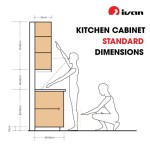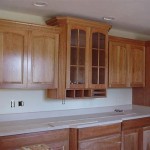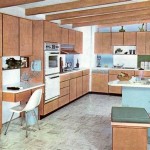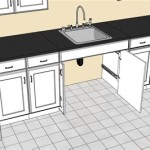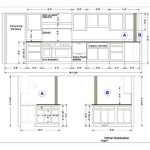Raw Wood Kitchen Cabinets: A Guide to Natural Beauty and Customization
Raw wood kitchen cabinets offer a unique appeal, combining the warmth and character of natural wood with the potential for extensive customization. They provide a blank canvas for homeowners seeking a truly personalized kitchen, allowing for creative finishes and designs difficult to achieve with pre-finished cabinets. This guide explores the benefits, considerations, and finishing options associated with raw wood kitchen cabinets.
Benefits of Raw Wood Cabinets
Raw wood cabinets provide several advantages for homeowners seeking design flexibility and cost control.
- Customization: The unfinished surface readily accepts various stains, paints, and glazes, allowing for a wide range of color and finish options.
- Cost-Effectiveness: Unfinished cabinets are typically less expensive than pre-finished options, offering potential cost savings, especially for large kitchens.
- Wood Selection: Homeowners can select their preferred wood species, considering factors like grain pattern, hardness, and color.
- Repair Ease: Damage to raw wood can often be repaired more easily than damage to pre-finished surfaces.
Wood Species for Kitchen Cabinets
Choosing the right wood species is crucial for the durability and aesthetics of raw wood cabinets. Each wood type possesses unique characteristics that influence its suitability for kitchen use.
- Maple: A dense, closed-grain wood known for its durability and smooth finish, making it ideal for painting.
- Oak: A strong, open-grained wood with a distinctive grain pattern, suitable for staining or painting.
- Cherry: A richly colored wood that darkens with age, offering a classic and elegant look.
- Birch: A fine-grained wood with a light color, often used for painted cabinets.
- Pine: A softer wood with a prominent grain pattern, offering a rustic or farmhouse aesthetic.
Preparing Raw Wood Cabinets for Finishing
Proper preparation is essential for achieving a professional-looking finish on raw wood cabinets. This process involves several key steps.
- Sanding: Smooth the wood surface with progressively finer grits of sandpaper to remove imperfections and create a uniform surface for finishing.
- Cleaning: Remove all sanding dust with a tack cloth or vacuum to ensure a clean surface for the finish to adhere to.
- Wood Conditioner (Optional): Applying a wood conditioner can help ensure even absorption of stain, particularly on open-grained woods like oak.
Finishing Options for Raw Wood Cabinets
The choice of finish will significantly impact the final appearance and durability of the cabinets. Several options exist, each offering unique benefits.
- Stain: Enhances the natural grain and color of the wood, offering a variety of shades and tones.
- Paint: Provides a solid, opaque finish in any color, allowing for complete design flexibility.
- Glaze: Adds depth and dimension to the finish, often applied over stain or paint to create a layered effect.
- Clear Coat: Protects the wood from moisture and wear, available in various sheens from matte to high gloss.
Applying the Finish
The application method varies depending on the chosen finish. Careful application is crucial for achieving a smooth and even result.
- Brushing: Suitable for most finishes, requires careful technique to avoid brush marks.
- Spraying: Provides a smooth, even finish, often preferred for professional results.
- Wiping: Commonly used for stains and glazes, allows for controlled application and blending.
- Drying Time: Allow ample drying time between coats and before installation to ensure proper curing of the finish.
Maintaining Raw Wood Cabinets
Proper maintenance is essential for preserving the beauty and longevity of raw wood cabinets. Regular cleaning and care will help prevent damage and maintain their appearance.
- Cleaning: Use a damp cloth and mild soap to clean surfaces, avoiding harsh chemicals or abrasive cleaners.
- Protection: Use coasters and placemats to protect surfaces from spills and heat.
- Repairs: Address minor scratches or damage promptly to prevent further deterioration.
Cost Considerations
While raw wood cabinets generally offer cost savings compared to pre-finished options, the final cost will depend on several factors.
- Wood Species: Some wood species are more expensive than others.
- Finishing Materials: The cost of stains, paints, and clear coats can vary significantly.
- Labor Costs: If professional finishing is required, labor costs will add to the overall expense.
Installation
Installing raw wood cabinets requires careful planning and execution. Proper installation ensures the cabinets are securely mounted and function correctly.
- Professional Installation: Consider hiring a professional installer for complex installations or if specialized tools are required.
- DIY Installation: For experienced DIYers, installing raw wood cabinets can be a cost-effective option.
- Accuracy: Precise measurements and level installation are crucial for proper alignment and functionality.

Raw Wood Cabinets In Kitchen Home Decor Interior Natural

52 Natural Wood Kitchen Cabinets Look

52 Natural Wood Kitchen Cabinets Look

Unfinished Kitchen Cabinets Pictures Options Tips Ideas

House Home See How Warm Wood Wows In These 75 Kitchens Bathrooms

Rok Hardware On Instagram Some People Just Have A Design Eye The U Turn Pull In Matte Black Looks Sensational Kitchen Style Home Decor Kitchens

Everything You Need To Know About Unfinished Cabinets And Why Avoid Them

Raw Character Kitchens With Natural Wood Cabinets

Wooden Kitchen Combining Raw Wood And Modernity

All You Need To Know About Unfinished Cabinets Cc



